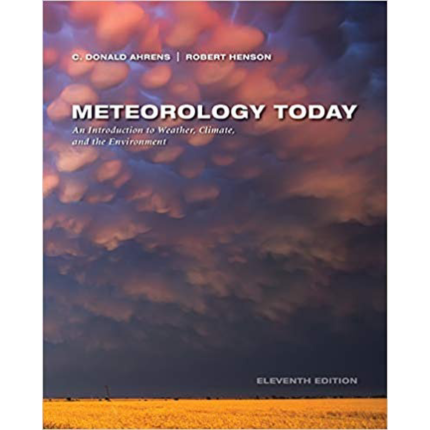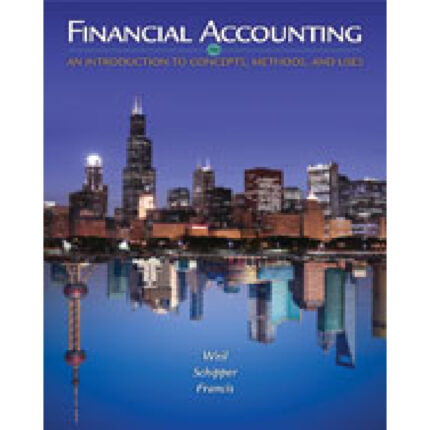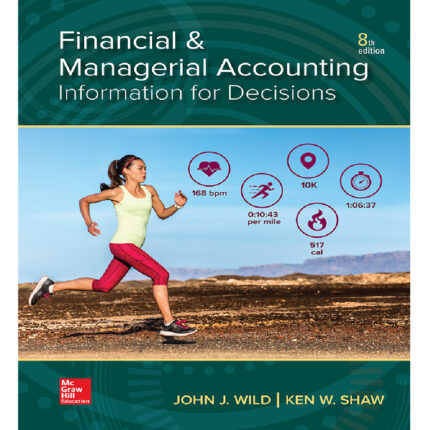Financial Accounting Tools For Business Decision Making 7th Edition By Kimmel – Test Bank
MULTIPLE CHOICE QUESTIONS
47. Under the corporate form of business organization
a. a stockholder is personally liable for the debts of the corporation.
b. stockholders’ acts can bind the corporation even though the stockholders have not been appointed as agents of the corporation.
c. the corporation’s life is stipulated in its charter.
d. stockholders wishing to sell their corporation shares must get the approval of other stockholders.
Ans: C, LO: 1, Bloom: K, Difficulty: Easy, Min: 1, AACSB: None, AICPA BB: Legal/Regulatory Perspective, AICPA FN: Risk Analysis, AICPA PC: None, IMA: Business Economics
48. Stockholders of a corporation directly elect
a. the president of the corporation.
b. the board of directors.
c. the treasurer of the corporation.
d. all of the employees of the corporation.
Ans: B, LO: 1, Bloom: K, Difficulty: Easy, Min: 1, AACSB: None, AICPA BB: Legal/Regulatory Perspective, AICPA FN: None, AICPA PC: None, IMA: Business Economics
49. Those most responsible for the major policy decisions of a corporation are the
a. stockholders.
b. board of directors.
c. management.
d. employees.
Ans: B, LO: 1, Bloom: K, Difficulty: Easy, Min: 1, AACSB: None, AICPA BB: Legal/Regulatory Perspective, AICPA FN: None, AICPA PC: None, IMA: Business Economics
50. The chief accounting officer in a company is known as the
a. controller.
b. treasurer.
c. vice-president.
d. president.
Ans: A, LO: 1, Bloom: K, Difficulty: Easy, Min: 1, AACSB: None, AICPA BB: Industry/Sector Perspective, AICPA FN: None, AICPA PC: None, IMA: Business Economics
51. Which one of the following would not be considered an advantage of the corporate form of organization?
a. Limited liability of stockholders.
b. Separate legal existence.
c. Continuous life.
d. Government regulation.
Ans: D, LO: 1, Bloom: K, Difficulty: Easy, Min: 1, AACSB: None, AICPA BB: Legal/Regulatory Perspective, AICPA FN: Reporting, AICPA PC: None, IMA: Business Economics
52. The two ways that a corporation can be classified by purpose are
a. general and limited.
b. profit and not-for-profit.
c. state and federal.
d. publicly held and privately held.
Ans: B, LO: 1, Bloom: K, Difficulty: Easy, Min: 1, AACSB: None, AICPA BB: Legal/Regulatory Perspective, AICPA FN: Reporting, AICPA PC: None, IMA: Business Economics
53. The two ways that a corporation can be classified by ownership are
a. publicly held and privately held.
b. stock and non-stock.
c. inside and outside.
d. majority and minority.
Ans: A, LO: 1, Bloom: K, Difficulty: Easy, Min: 1, AACSB: None, AICPA BB: Legal/Regulatory Perspective, AICPA FN: Reporting, AICPA PC: None, IMA: Reporting
54. Which of the following would not be true of a privately held corporation?
a. It is sometimes called a closely held corporation.
b. Its shares are regularly traded on the New York Stock Exchange.
c. It does not offer its shares for sale to the general public.
d. It is usually smaller than a publicly held company.
Ans: B, LO: 1, Bloom: K, Difficulty: Easy, Min: 1, AACSB: None, AICPA BB: Legal/Regulatory Perspective, AICPA FN: Reporting, AICPA PC: None, IMA: Business Economics
55. Which of the following is not true of a corporation?
a. It may buy, own, and sell property.
b. It may sue and be sued.
c. The acts of its owners bind the corporation.
d. It may enter into binding legal contracts in its own name.
Ans: C, LO: 1, Bloom: K, Difficulty: Easy, Min: 1, AACSB: None, AICPA BB: Legal/Regulatory Perspective, AICPA FN: Reporting, AICPA PC: None, IMA: Business Economics
56. Jason Hansen has invested $600,000 in a privately held family corporation. The corporation does not do well and must declare bankruptcy. What amount does Hansen stand to lose?
a. Up to his total investment of $600,000.
b. Zero.
c. The $600,000 plus any personal assets the creditors demand.
d. $400,000.
Ans: A, LO: 1, Bloom: C, Difficulty: Easy, Min: 1, AACSB: None, AICPA BB: Legal/Regulatory Perspective, AICPA FN: Risk Analysis, AICPA PC: None, IMA: Business Economics
57. Which of the following statements reflects the transferability of ownership rights in a corporation?
a. If a stockholder decides to transfer ownership, he must transfer all of his shares.
b. A stockholder may dispose of part or all of his shares.
c. A stockholder must obtain permission of the board of directors before selling shares.
d. A stockholder must obtain permission from at least three other stockholders before selling shares.
Ans: B, LO: 1, Bloom: K, Difficulty: Easy, Min: 1, AACSB: None, AICPA BB: Legal/Regulatory Perspective, AICPA FN: None, AICPA PC: None, IMA: Business Economics
58. A corporate board of directors does not generally
a. select officers.
b. formulate operating policies.
c. declare dividends.
d. execute policy.
Ans: D, LO: 1, Bloom: K, Difficulty: Easy, Min: 1, AACSB: None, AICPA BB: Legal/Regulatory Perspective, AICPA FN: None, AICPA PC: None, IMA: Business Economics
59. The officer that is generally responsible for maintaining the cash position of the corporation is the
a. controller.
b. treasurer.
c. cashier.
d. internal auditor.
Ans: B, LO: 1, Bloom: K, Difficulty: Easy, Min: 1, AACSB: None, AICPA BB: Legal/Regulatory Perspective, AICPA FN: Reporting, AICPA PC: None, IMA: Business Economics
60. The ability of a corporation to obtain capital is
a. enhanced because of limited liability and ease of share transferability.
b. less than a partnership.
c. restricted because of the limited life of the corporation.
d. about the same as a partnership.
Ans: A, LO: 1, Bloom: K, Difficulty: Easy, Min: 1, AACSB: None, AICPA BB: Legal/Regulatory Perspective, AICPA FN: Reporting, AICPA PC: None, IMA: Business Economics
61. Which of the following statements concerning taxation is accurate?
a. Partnerships pay state income taxes but not federal income taxes.
b. Corporations pay federal income taxes but not state income taxes.
c. Corporations pay federal and state income taxes.
d. Only the owners must pay taxes on corporate income.
Ans: C, LO: 1, Bloom: K, Difficulty: Easy, Min: 1, AACSB: None, AICPA BB: Legal/Regulatory Perspective, AICPA FN: Reporting, AICPA PC: None, IMA: Business Economics
62. Which of the following statements is not considered a disadvantage of the corporate form of organization?
a. Additional taxes.
b. Government regulations.
c. Limited liability of stockholders.
d. Separation of ownership and management.
Ans: C, LO: 1, Bloom: K, Difficulty: Easy, Min: 1, AACSB: None, AICPA BB: Legal/Regulatory Perspective, AICPA FN: Reporting, AICPA PC: None, IMA: Business Economics
63. A disadvantage of the corporate form of organization is
a. professional management.
b. tax treatment.
c. ease of transfer of ownership.
d. lack of mutual agency.
Ans: B, LO: 1, Bloom: K, Difficulty: Easy, Min: 1, AACSB: None, AICPA BB: Legal/Regulatory Perspective, AICPA FN: Reporting, AICPA PC: None, IMA: Business Economics
64. A disadvantage of the corporate form of business is
a. its status as a separate legal entity.
b. continuous existence.
c. government regulation.
d. ease of transfer of ownership.
Ans: C, LO: 1, Bloom: K, Difficulty: Easy, Min: 1, AACSB: None, AICPA BB: Legal/Regulatory Perspective, AICPA FN: Reporting, AICPA PC: None, IMA: Business Economics
65. Which of the following phrases is not descriptive of the corporate form of business?
a. Professional management.
b. Double taxation on distributed earnings.
c. Unlimited liability.
d. Continuous existence.
Ans: C, LO: 1, Bloom: K, Difficulty: Easy, Min: 1, AACSB: None, AICPA BB: Legal/Regulatory Perspective, AICPA FN: Reporting, AICPA PC: None, IMA: Business Economics
66. Which one of the following is not an ownership right of a stockholder in a corporation?
a. To vote in the election of directors.
b. To declare dividends on the common stock.
c. To share in assets upon liquidation.
d. To share in corporate earnings.
Ans: B, LO: 1, Bloom: K, Difficulty: Easy, Min: 1, AACSB: None, AICPA BB: Legal/Regulatory Perspective, AICPA FN: Reporting, AICPA PC: None, IMA: Business Economics
67. If no-par stock is issued without a stated value, then
a. the par value is automatically $1 per share.
b. the entire proceeds are considered to be legal capital.
c. there is no legal capital.
d. the corporation is automatically in violation of its state charter.
Ans: B, LO: 2, Bloom: K, Difficulty: Easy, Min: 1, AACSB: None, AICPA BB: Legal/Regulatory Perspective, AICPA FN: Measurement, AICPA PC: None, IMA: FSA
68. If a stockholder cannot attend a stockholders’ meeting, he may delegate his voting rights by means of a(n)
a. absentee ballot.
b. proxy.
c. certified letter.
d. telegram.
Ans: B, LO: 1, Bloom: K, Difficulty: Easy, Min: 1, AACSB: None, AICPA BB: Legal/Regulatory Perspective, AICPA FN: None, AICPA PC: None, IMA: Business Economics
69. The term residual claim refers to a stockholders’ right to
a. receive dividends.
b. share in assets upon liquidation.
c. acquire additional shares when offered.
d. exercise a proxy vote.
Ans: B, LO: 1, Bloom: K, Difficulty: Easy, Min: 1, AACSB: None, AICPA BB: Legal/Regulatory Perspective, AICPA FN: Risk Analysis, AICPA PC: None, IMA: Business Economics
70. Which of the following factors does not affect the initial market price of a stock?
a. The company’s anticipated future earnings.
b. The par value of the stock.
c. The current state of the economy.
d. The expected dividend rate per share.
Ans: B, LO: 2, Bloom: K, Difficulty: Easy, Min: 1, AACSB: None, AICPA BB: Legal/Regulatory Perspective, AICPA FN: Risk Analysis, AICPA PC: None, IMA: Business Economics













Reviews
There are no reviews yet.